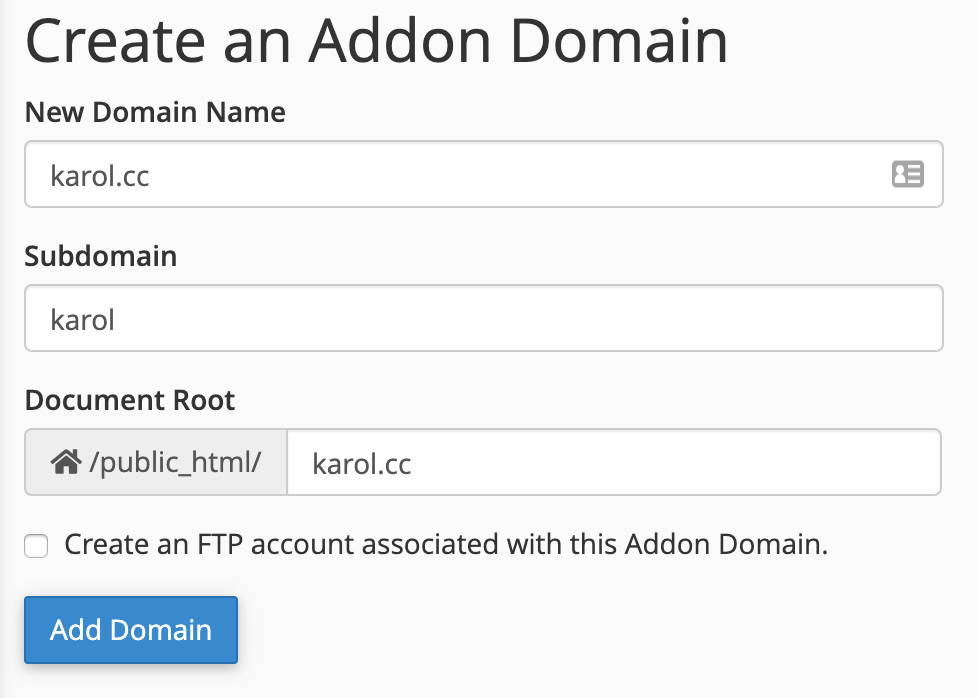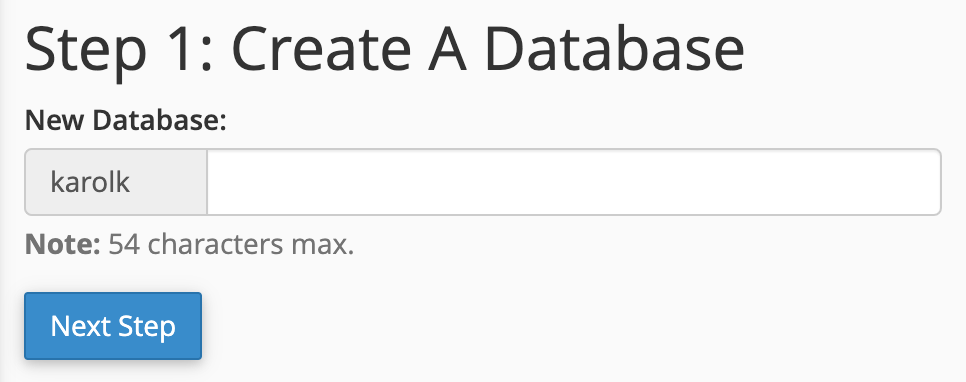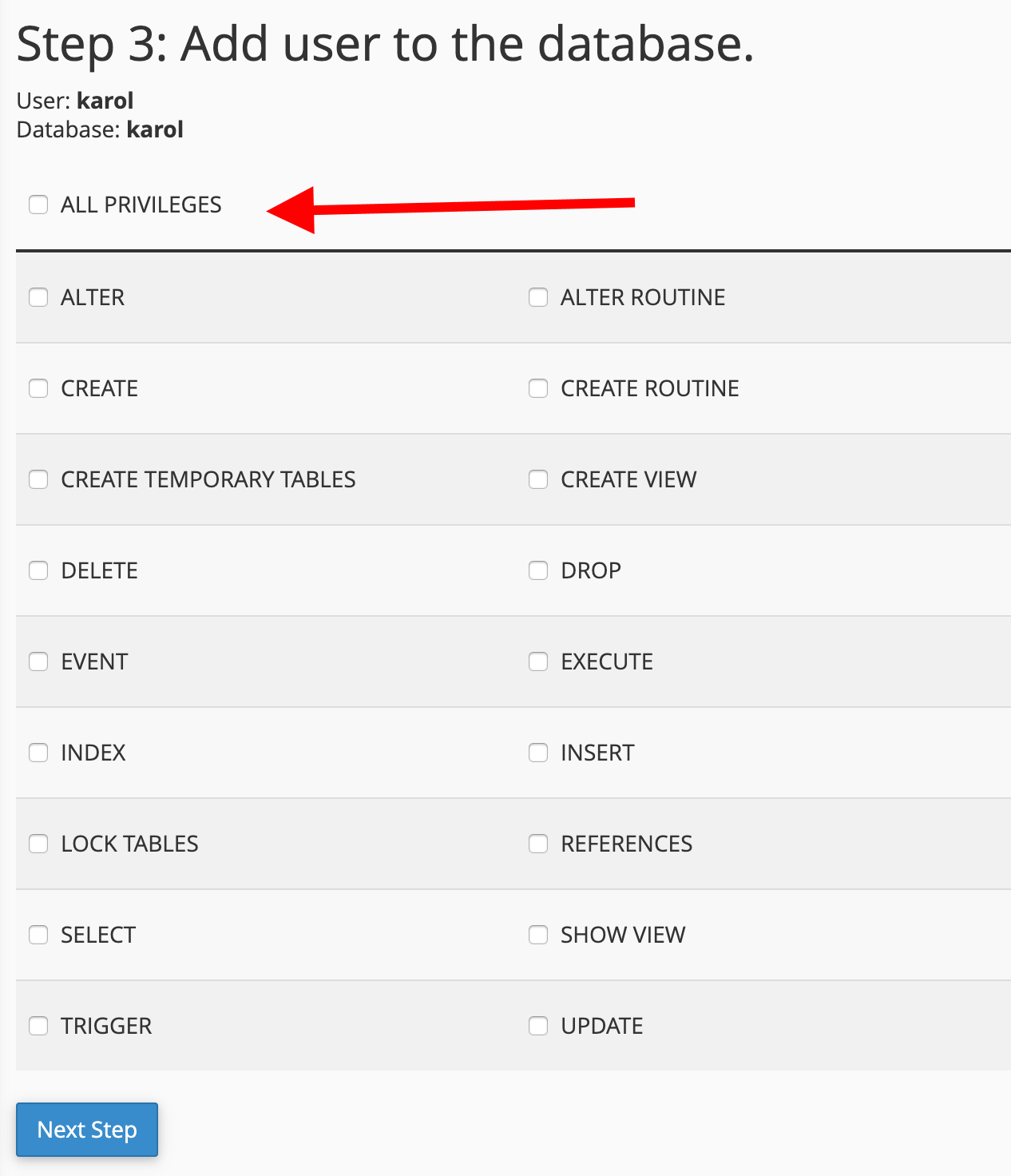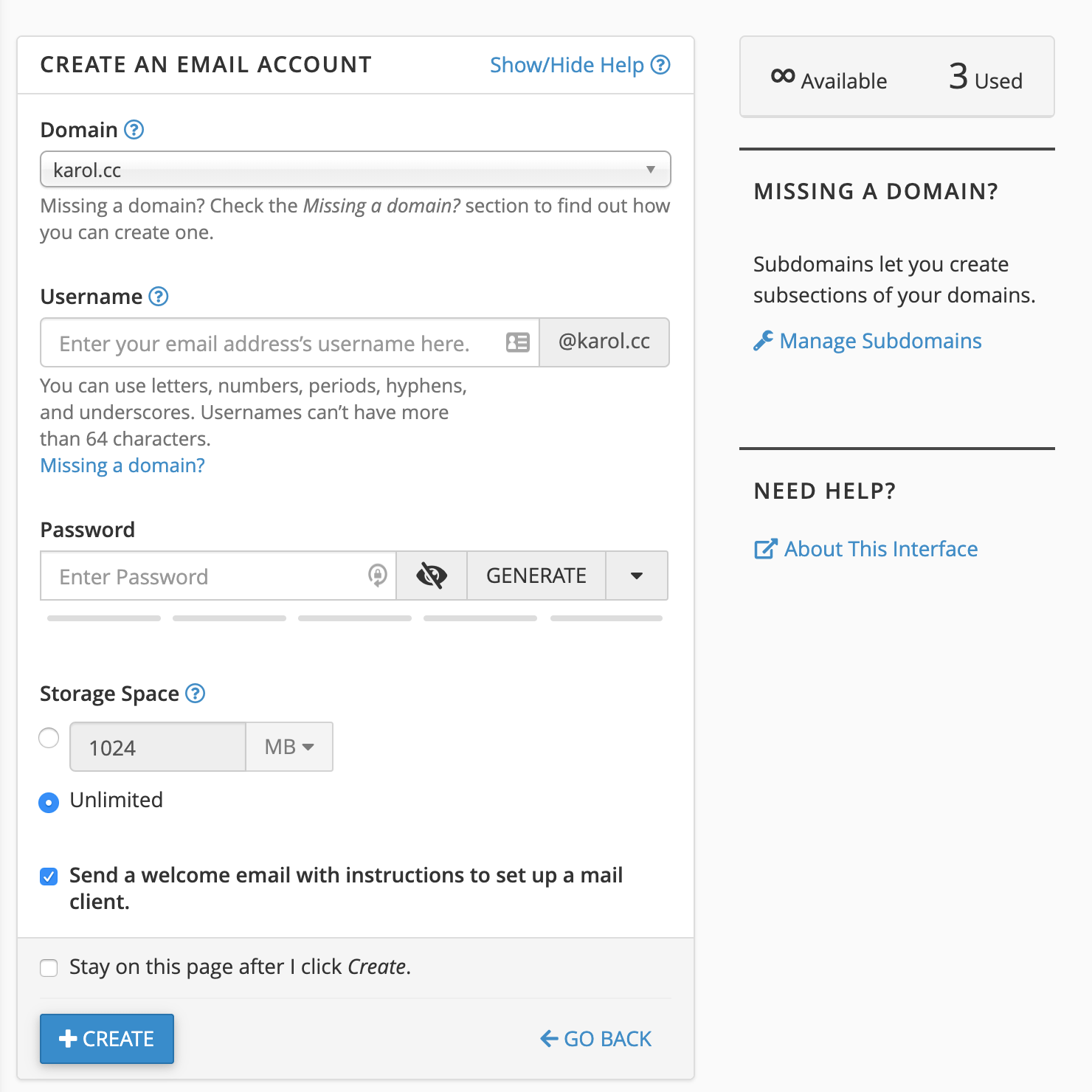How To Upload Your Content To A New Host
Trying to effigy out how to movement a website to a new host without breaking anything, causing downtime or whatever other problems that could hurt your Google rankings?
As with whatever motion, moving your site to a new host tin feel a little daunting, especially if you haven't done it before. All the same, it doesn't have to be, and with the tutorial that we'll share in this post, you should be able to motility virtually any website to a new host.
A quick annotation here – in this post, nosotros're focused on a generic process for how to move a website to a new host that volition piece of work for all websites, including WordPress, Joomla, Drupal, etc.

However, if you are using WordPress, in that location are some tools that make the process a lot easier, and we have an unabridged guide dedicated only to WordPress and those tools.
👉 Become to our WordPress-specific guide for moving web hosts
But commencement – does your new spider web host offer gratis migrations?
Before you start down the manual road of how to move a website to a new host, we'd encourage you to bank check whether your new host offers a free migration service (or an affordable paid service).
Many hosts will migrate at least i website for free when you sign up. If you're moving from 1 cPanel host to another cPanel host, information technology's also usually pretty easy for your host's back up staff to migrate your entire cPanel account, which means you'll be able to bring everything over in i pace.
If you're however undecided on which host to switch to, some quality and affordable hosts that offering free migration services include:
- A2 Hosting
- GreenGeeks
- InMotion Hosting
Y'all'll also find other hosts that offer professional migration services for an affordable cost. Some proficient options hither are:
- SiteGround – as low every bit $30/site for professional person migrations (or complimentary WordPress migrations using SiteGround'south automated tool).
- Bluehost – $149.99 to professionally drift upward to five websites.
- DreamHost – $99 to migrate any type of website (or costless WordPress migrations using DreamHost'south automated tool).
If you can swing information technology, paying for someone else to do the work for you can save you a lot of aggravation, especially if y'all're non a technical user.
And if you're using WordPress and still reading this article, almost premium managed WordPress hosts as well offering gratis WordPress migrations. Proficient options here are:
- Kinsta
- WP Engine
- Flywheel
How to motion a website to a new host – step-by-step
If y'all're set on manually migrating your site to a new host, here'southward a bird'due south center view of the steps that y'all'll accept in this tutorial:
If y'all only take one site, y'all probably entered your domain name already when you signed up for your host. However, if you have multiple sites, you might need to create an Addon Domain instead *:
* Addon domains are what cPanel calls additional domain names – your host might use different terminology if it doesn't use cPanel.

ii. Motion your site's files using FTP
Adjacent, you lot need to move all of your site's files to your new host. This might take some fourth dimension if you have a large site, but you'll merely need to put in a few seconds of manual try – the rest is just waiting.
The easiest way to motility your site's files is via FTP. To connect via FTP, y'all'll need an FTP programme – FileZilla is a skillful gratuitous option if yous're not sure where to start, but there are lots of proficient FTP clients.
💡 Dislocated by FTP? Cheque out this full guide to FTP to larn the basics
In improver to your FTP program, you'll also need the FTP credentials (host, username, password, port) from both your one-time host and your new host. You should be able to discover these in your hosting dashboard, but you can inquire your host's support staff for assist if needed.
Once you have that data, open two windows for your FTP plan:
- Window 1 – connect to your existing host using your FTP credentials.
- Window 2 – connect to your new host using your FTP credentials.
In both windows, browse to your site's chief binder:
- Window i – you should see all of your site's files.
- Window 2 – this should be mostly empty, though you might see a few files from your host.
Select all of the files in Window i (sometime host) and download them to your local reckoner:
Some FTP programs will let you drag files directly between the two windows, simply FileZilla doesn't currently support this feature. If you're using a unlike FTP program, y'all can cheque to see if it will let you motility files straight.
Once the download finishes, upload all of those files using Window 2 (your new host). Yous can but drag-and-drop all of the files from your computer into the FileZilla interface.
For a large site, it might take a proficient bit of fourth dimension to both download and upload all of the files, then yous might want to stride abroad and practise something else while you wait.
3. Consign your site'due south database from your existing host
There are two parts to most websites:
- Your site's files, which you lot moved in the previous step.
- Your site's database, which usually contains all of your site's content and settings.
If you only have a static HTML website, you don't need to move your database considering your site doesn't accept a database.
However, about content management systems (CMS) rely on a database to store your content. This includes:
- WordPress, Joomla, Drupal, Magento, etc.
To move your database, yous'll beginning need to export your database from your existing host. Then, you'll import it to your new host in the next footstep.
To export your database, you tin utilize phpMyAdmin, which is a database admin tool that nigh hosts offer. If your electric current host uses cPanel, you should see a phpMyAdmin tool in the Databases section.
Once you open phpMyAdmin, you'll demand to select the database for the site that you want to motion on the left (you'll see multiple databases if y'all host multiple sites).
So:
- Go to the Export tab
- Select Quick for the Export method
- Choose SQL for the format
- Click Get to consign your database
4. Import your site'south database to your new host
Once you've exported your site's database from your former host, you need to reverse the procedure and import it to your new host.
Before you lot tin practise that, you demand to create a new, empty database at your new host. If your host uses cPanel, you lot can practice that by opening the MySQL Database Magician tool under the Databases section in cPanel.
While going through the sorcerer, you'll be prompted to enter a:
- Database proper name
- Database username
- Password for your database username
If possible, try to utilize the verbal same database proper noun, username, and countersign as your old host. This will eliminate the demand to update configuration settings. If you don't remember those details, that'due south ok – you'll just need to update configuration files in the adjacent step.

Once yous create your database username, you'll demand to give it all privileges on the next screen:

Later creating your new database, open phpMyAdmin at your new host and select the database that you just created using the sidebar on the left.
And so:
- Go to the Import tab
- Apply the File to import department to select the .sql.zip file that you exported in the previous footstep
- Click Go to import your database
Ideally, you'll be finished now. However, some CMS tools apply database serialization which can crusade bug when y'all consign/import your database like this. WordPress is one example where it's mutual to encounter database serialization issues.
Unfortunately, we can't give one blanket recommendation for all platforms here considering it depends on the platform (and you might not fifty-fifty feel any problems).
If you experience problems, you tin can usually use Google to discover scripts that can help you fix the problem for your specific platform. For example, here'south a popular script that can set up WordPress database serialization issues.
5. Update whatsoever necessary configuration details (depends on CMS)
Once more, it's hard to give specific instructions here because this footstep will depend on your CMS and how it's configured.
However, at this point, you might need to update some configuration details in your site'due south configuration files or settings to point to the new database that you created (particularly if you used a different database name, username, or password).
Here are tutorials for how to update this information for some of the nigh popular CMS tools:
- WordPress
- Drupal
- Joomla
- Magento
If you're using a unlike website platform, you might demand to turn to Google to effigy out how your platform handles configuration files.
six. Examination your site
At this point, your site should be working on your new host. Notwithstanding, you'll want to thoroughly exam it to make sure it is.
Y'all tin't do this past inbound your site's domain name because your domain name still points to your old host (for now). This is necessary to ensure that you don't have any downtime during the move.
There are 2 ways to get effectually this:
Option ane: Use a temporary URL
Almost web hosts requite you lot an choice to view your website on a temporary URL before switching domain names.
This temporary URL typically looks something like this:
https://[cpanel_ip_address]/[cpanel_username]/[domain.com]
For instance:
http://171.654.321.000/~colin12/codeinwp.com/
If you lot're not sure where to find this temporary URL, we'd recommend asking your new host'southward support for help.
Option 2: Edit your estimator's hosts file
Another option to examination your site is to edit your calculator'southward hosts file to bespeak to your new server. This lets y'all manually override your computer to tell information technology to apply your new server when you enter yoursite.com (all of your other visitors will however be taken to your existing host for now, though).
Kickoff, you'll need your server's IP address, which you can find in cPanel (or, your host usually includes this in your welcome email):

Then, you'll need to edit your hosts file:
How to edit the hosts file on Windows How to edit the hosts file on Mac
You can find the hosts file in C:\Windows\System32\drivers\etc. It may be subconscious, and so you might want to adjust the file display settings to meet information technology.
The hosts file has no extension simply it'south in obviously text format, which means that y'all tin open it with Notepad or any other text editor (just right-click and tell Windows to open it with Notepad).
At the very end of this file add a new line like this:
YOUR.SERVER.IP.ADDRESS YOURDOMAIN.com
For example:
ten.21.11.192 YOURDOMAIN.com
Save the file.
To become started, open the Last app – you tin can find it via App Launcher.
In Terminal, type in sudo nano /etc/hosts and hit enter.
Then, enter your admin countersign and hitting enter.
You should now be in the Nano text editor with your hosts file open up.

Position the cursor at the lesser using the arrow keys.
Add a new line at the very end of the file:
YOUR.SERVER.IP.ADDRESS YOURDOMAIN.com
For instance:
x.21.eleven.192 YOURDOMAIN.com
In one case you've added the line, hold down the "Control" and "O" keys to save the file. And so, hold down "Command" and "X" to get out.
After editing your hosts file, yous should now run into the new version of your site when yous browse to your domain name.
In one case yous've verified that your new site works properly, you're nigh finished – but two more steps.
seven. Move your email addresses (optional)
If you lot're using email hosting from your old host to create a custom email address – east.g. [email protected] – yous'll likewise want to set up up this email address at your new host before you lot brand the switch.
Otherwise, you won't be able to receive emails one time you lot update your domain name in the next step.
If yous're using e-mail hosting from your host, y'all tin do this by recreating your custom email addresses at your new host via cPanel:

If y'all're using a dissever email hosting service (such equally M Suite), yous might need to change the MX records in the DNS settings at your new host once yous point your domain name to that new host in the side by side step.
viii. Update your domain name to betoken to your new host
Once you lot've verified that the migrated version of your website is working properly, the final step in how to move a website to a new host is to update your domain name to point to that new host.
When you lot make the update, visitors will be taken to the new version of your site at your new host, with no downtime.
Typically, you'll practice this by changing your domain'due south nameservers, which yous tin control from the service where you purchased your domain name.
Commencement, you'll demand to locate the nameservers for your new web host. You lot can unremarkably find these in your hosting dashboard or welcome email. Or, y'all can ask your new host's support staff for help.
Your nameservers will look something like this (simply unique for each host):
-
ns1.yourhost.com -
ns2.yourhost.com
Most hosts provide two nameservers, but some will give you lot three or four different nameservers.
Once you have your nameservers, here are some tutorials for editing nameservers at popular domain registrars:
- GoDaddy
- Namecheap
- OVH
- Bluehost
For instance, hither'south what it looks like to edit a domain'southward nameservers with Namecheap:

9. Examination everything once more
At present, you lot'll need to wait for a niggling for the change that you lot made to your nameservers to take upshot. This can take upwardly to 24 hours, but commonly it'll only accept 30-60 minutes.
In one case the modify takes effect, you should be able to access the version of your site at your new host when yous become to your domain name.
Take some other moment to brand sure that everything is working:
- Browse around to different pages
- Examination your forms
- Brand sure yous can receive emails (if using custom e-mail addresses)
- Etc.
If everything is nevertheless working, you're officially finished – that's how to motility a website to a new host without whatever downtime!
Have questions about how to motion a website to a new host? Ask abroad in the comments and we'll try to help!

Layout and presentation by Karol Yard.
* This post contains affiliate links, which means that if you click on one of the product links and so purchase the product, nosotros'll receive a commission. No worries though, y'all'll still pay the standard corporeality so there's no cost on your part.
Source: https://www.codeinwp.com/blog/move-website-to-new-host/
Posted by: hessandfular.blogspot.com

0 Response to "How To Upload Your Content To A New Host"
Post a Comment